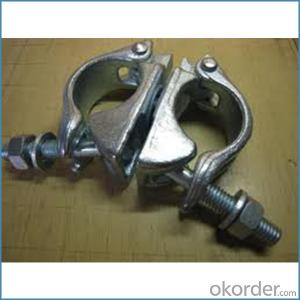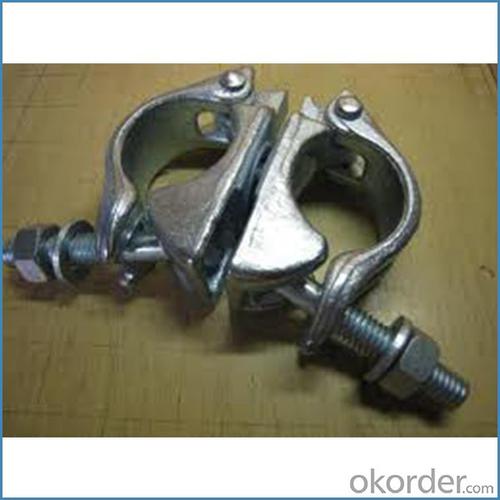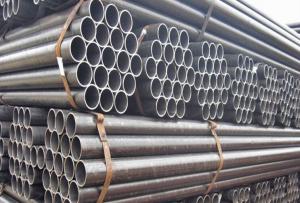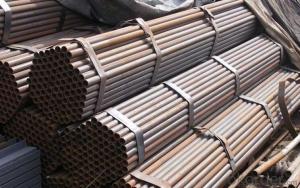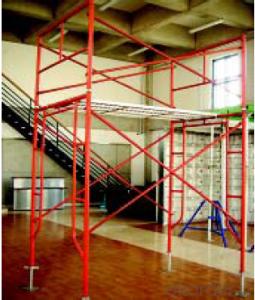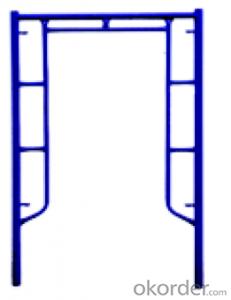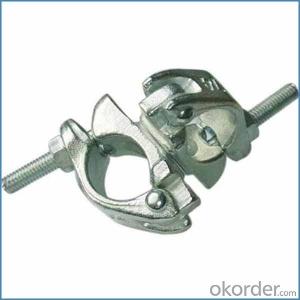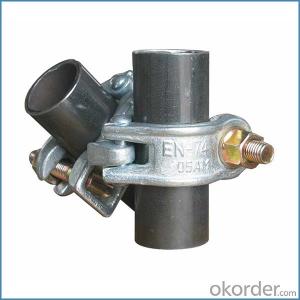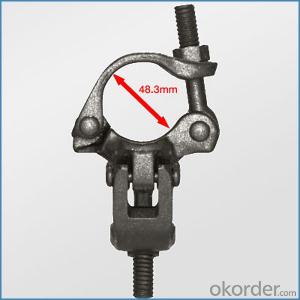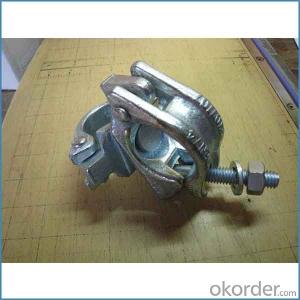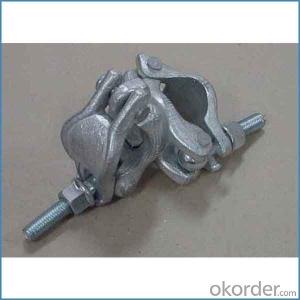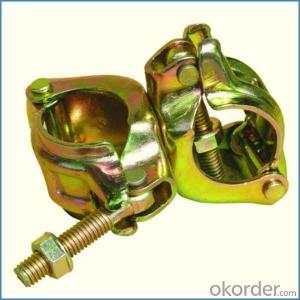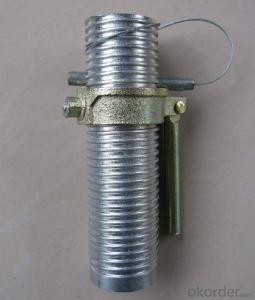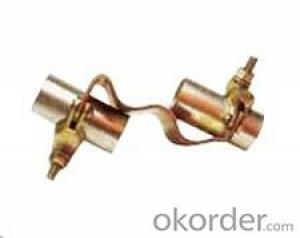Stainless Steel Coupler British Type for Sale
- Loading Port:
- Tianjin
- Payment Terms:
- TT OR LC
- Min Order Qty:
- 1000 kg
- Supply Capability:
- 100000 kg/month
OKorder Service Pledge
OKorder Financial Service
You Might Also Like
Stainless Steel Coupler British Type for Sale
Description
1.The scaffolding coupler is always used to connect the steel pipe as scaffolding system.
2.The often used coupler is swivel coupler and righ angle coupler .
3.We can provide types of scaffolding coupler according to your requirement.
4.Couoler can fix the 48.3mm scaffolding steel pipe tightly and make the whole scaffolding system more steadily.
5.Material:Q235 steel
6.Overall Size:48.3mm*48.3mm
7.Surface Finish: Galvanized/ Painted
8.Standard:BS1139,EN74
9.Package:25pcs/bag
10.Manufactuering as per customer requirements
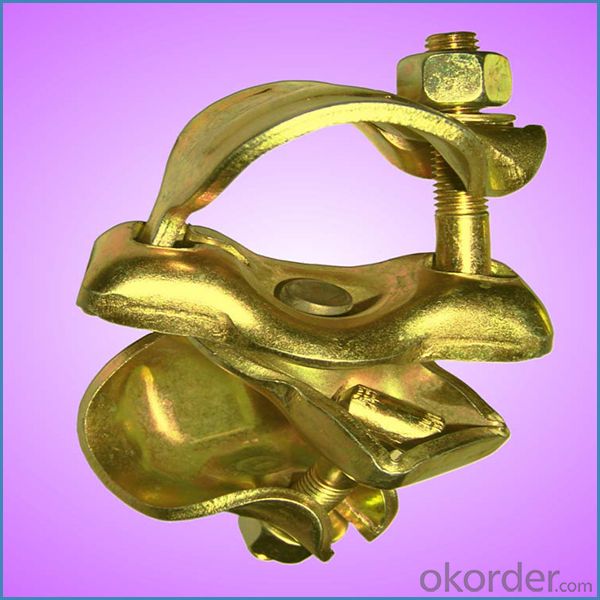
Feature
(1)Excellent Anti-Breaking—Cold Pressed Steel
(2)Outstanding Resistance Deformation
(3)Strong Anti-Dropping Ability
(4)Longtime USe
(5)Qualtity Guaranteed
(6)OEM Service
Photo

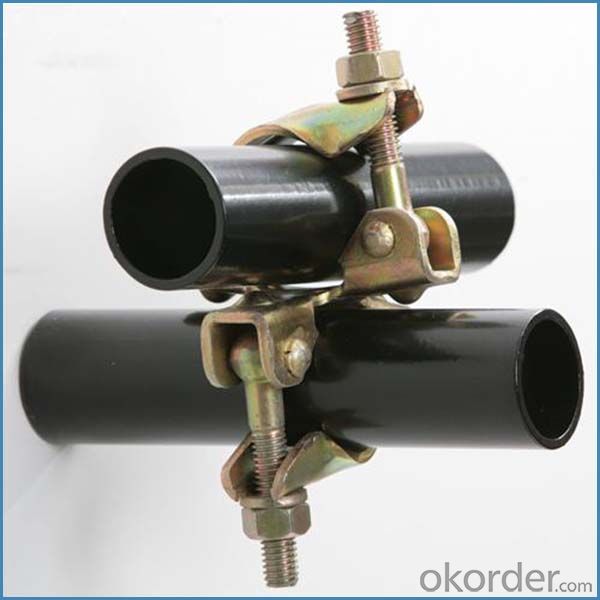
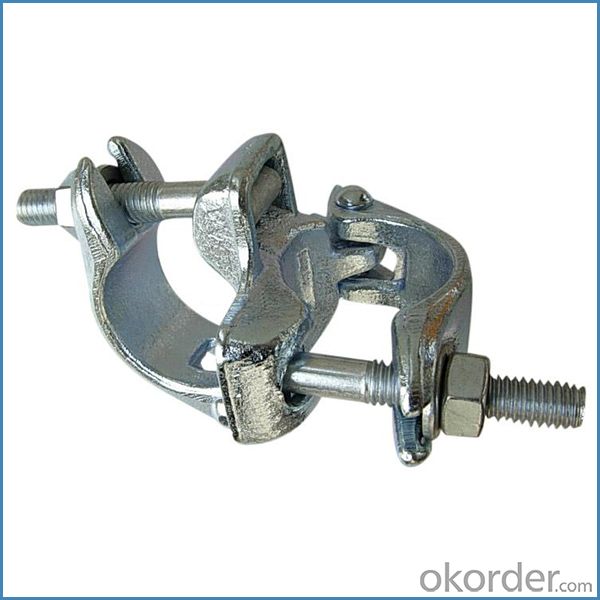
Parameter
| Material | Q235,345steel |
| Size | 48.3mm*48.3mm |
| Surface finish | Galvanized |
| Weight | 1.1kg around |
| Standard | BS1139,EN74 |
| Package | 25pcs/bag,steel pallet |
| Manufacture | As per customer requirement |
| Market | Africa, South America, the Middle East and Asia |
FAQ
Q: Are you a factory or trading company?
We are a state-owned corporation in China,dealing with various kinds of building materials.We have our holding subsidiaries.
Q: Where is your factory located? How can I visit there?
Our factory is located all around China.
Q: Can I get some samples?
Sample is free, customer only pay freight for the first time.
Q: Delivery?
10-30days. (5-15 containers)
Any question,feel free to contact us.
- Q: Are steel tube couplers adjustable for different heights in suspended scaffolding?
- Steel tube couplers in suspended scaffolding are adjustable for different heights. These couplers are specifically designed to connect and secure the steel tubes used in constructing the scaffolding system. They are available in various types, including swivel couplers, putlog couplers, and sleeve couplers, all of which offer flexibility and the ability to adjust the height. For instance, swivel couplers are designed to connect two scaffolding tubes at any angle, allowing for height and positioning adjustments. Putlog couplers, on the other hand, are used to connect transoms or putlogs to the ledgers, extending the scaffolding horizontally at varying heights. Sleeve couplers, on the contrary, are used to join two scaffolding tubes together, providing additional length and adjustability. By utilizing these different types of steel tube couplers, suspended scaffolding can be easily adjusted to accommodate different heights according to the specific requirements of the construction or maintenance project. This adjustability guarantees the safety and stability of the scaffolding structure, while also providing workers with a comfortable working height.
- Q: Can steel tube couplers be used for scaffolding with high load-bearing requirements?
- Scaffolding with high load-bearing requirements can indeed utilize steel tube couplers. These couplers are specifically crafted to interconnect steel tubes, thereby establishing a robust and steadfast scaffold structure. Construction ventures frequently employ them in scenarios demanding substantial weight support. Given their remarkable resilience and exceptional load-bearing capacities, steel tube couplers prove fitting for scaffolding applications necessitating high load-bearing requirements. To guarantee safety and stability, it is imperative to undertake meticulous installation of the couplers and adhere to industry standards and regulations when designing and erecting the scaffold.
- Q: What are the common installation methods for steel tube couplers in scaffolding?
- Depending on the particular requirements and design of the scaffolding system, there are various installation techniques commonly employed for steel tube couplers. One frequently utilized approach is the sleeve or compression method. Here, the steel tube coupler is positioned over the two tubes requiring connection and subsequently secured by tightening bolts or nuts. This results in a stable and firm bond between the tubes, promoting safety and stability within the scaffolding structure. Another technique is the swivel method, utilized when a flexible joint is needed in the scaffolding system. The steel tube coupler employed in this method is equipped with a swivel mechanism, allowing the connected tubes to rotate or pivot. This proves advantageous in situations where the scaffolding must adapt to uneven surfaces or changes in angles. Additionally, the wedge method is often employed to expedite the installation of steel tube couplers. In this method, the coupler is positioned between the tubes, and a wedge is inserted to secure the connection. This approach is efficient and time-saving, making it particularly suitable for large-scale scaffolding projects. It is important to note that regardless of the chosen installation method, proper alignment and tightening of the steel tube couplers according to recommended torque specifications are essential. This ensures the structural integrity of the scaffolding system and the safety of workers utilizing the scaffolding.
- Q: How does a sleeve coupler work in scaffolding?
- The sleeve coupler, a crucial scaffolding component, serves to join two scaffold tubes. It comprises a cylindrical sleeve that fits over the ends of the tubes and is secured by tightening bolts or clamps. To utilize a sleeve coupler, one must insert the ends of two scaffold tubes into the sleeve, ensuring full insertion. Then, the bolts or clamps are tightened to firmly hold the tubes in place, establishing a robust and stable connection. The sleeve coupler functions by generating a frictional grip between the tubes and the coupler. As the bolts or clamps are tightened, pressure is exerted on the tubes, causing them to grasp the sleeve tightly. This frictional grip guarantees that the tubes remain securely connected, even when subjected to the weight and pressure of workers and equipment on the scaffold. Moreover, the design of the sleeve coupler permits easy assembly and disassembly of scaffolding. When it is time to dismantle the scaffold, one can loosen the bolts or clamps, allowing for effortless removal of the tubes from the coupler. In conclusion, the sleeve coupler is a straightforward yet effective device employed in scaffolding to establish a secure connection between scaffold tubes, ensuring stability and safety for workers while safeguarding the integrity of the scaffold structure.
- Q: How do you ensure proper stability when connecting steel tube couplers in scaffolding?
- To ensure proper stability when connecting steel tube couplers in scaffolding, there are several key measures that need to be taken: 1. Compatibility: Always ensure that the steel tube couplers being used are compatible with the scaffolding system being used. Check the manufacturer's guidelines and specifications to confirm that the couplers are designed to securely connect with the specific scaffolding system. Using incompatible or generic couplers can compromise stability. 2. Tightening: Properly tighten the couplers to ensure a secure connection. Use the appropriate tools, such as torque wrenches, to apply the necessary force and achieve the recommended torque. Avoid overtightening as it can damage the couplers or the tubes. 3. Alignment: Ensure that the tubes being connected are properly aligned before attaching the couplers. Misalignment can weaken the stability of the connection. Use a spirit level or laser level to verify the alignment of the tubes. 4. Overlapping: When connecting steel tubes using couplers, make sure there is an adequate overlap between the tubes. The overlap should be at least 150mm (6 inches) to provide sufficient strength and stability. Avoid short overlaps as they can compromise the overall stability of the scaffolding structure. 5. Regular Inspections: Regularly inspect the scaffolding structure for any signs of loosening or instability. This includes checking the tightness of the couplers, the alignment of the tubes, and any potential damage or wear and tear. If any issues are identified, take immediate corrective action, such as retightening or replacing the couplers. 6. Load Distribution: Properly distribute the load across the scaffolding structure. Ensure that the weight is evenly distributed and does not exceed the maximum load capacity of the couplers and the scaffolding system. Overloading can cause instability and compromise the safety of the structure. 7. Compliance with Regulations: Follow all local regulations and guidelines relating to scaffolding construction and use. Familiarize yourself with the specific requirements regarding steel tube couplers and ensure full compliance to maintain proper stability. By following these measures, you can ensure the proper stability and integrity of steel tube couplers in scaffolding, providing a safe and secure working platform for construction and maintenance activities.
- Q: Are steel tube couplers resistant to UV exposure?
- Steel tube couplers are known for their general resistance to UV exposure. They have the ability to endure various environmental conditions, including exposure to UV radiation from the sun. However, it is crucial to acknowledge that the degree of resistance may differ based on the particular steel type utilized and the quality of the protective coatings applied to the couplers. Furthermore, extended and intense UV exposure can slowly deteriorate the protective coatings, potentially resulting in some corrosion or discoloration over time. Consequently, it is advised to consistently inspect and upkeep steel tube couplers to guarantee their sustained durability and functionality.
- Q: What is a steel tube coupler?
- A steel tube coupler is a type of fitting used in the construction industry to connect two steel tubes together. It is designed to create a strong and secure connection between the tubes, allowing for the transfer of loads and forces. Steel tube couplers are typically made from high-quality steel and come in various sizes and designs to accommodate different applications. They are commonly used in scaffolding systems, handrails, and other structural installations where the connection needs to be reliable and durable. The coupler is usually tightened using bolts or other fasteners to ensure a tight fit between the two tubes, providing stability and safety in the construction project.
- Q: Are steel tube couplers adjustable for different angles or slopes in scaffolding projects?
- Steel tube couplers can be adjusted to accommodate different angles or slopes in scaffolding projects. These couplers are specifically designed to establish a secure connection between scaffold tubes, enabling the creation of various configurations and adaptation to different angles or slopes. Their adjustable feature guarantees that scaffolding structures can be set up on uneven terrain or tailored to meet specific project needs. Through the use of these versatile couplers, workers can safely assemble scaffolding on slopes, inclines, or at various angles, ultimately providing a stable and secure platform.
- Q: What are the load capacities of different types of steel tube couplers?
- The load capacities of different steel tube couplers can differ based on their design, size, and material composition. However, it is important to note that manufacturers typically provide load capacities for each individual product. Steel tube couplers are generally designed to create a secure and dependable connection between steel tubes in various applications like scaffolding, construction, and engineering projects. These couplers are commonly used to join tubes together and form a stable and load-bearing structure. Manufacturers determine the load capacities of steel tube couplers through thorough testing and analysis. This capacity is usually expressed as the maximum load that the coupler can safely handle without failure or deformation. The load capacity can be specified as either a maximum allowable load or a maximum allowable torque. The specific load capacities of steel tube couplers can vary based on factors like the type of coupler, its size, and the material it is made from. For example, couplers made from higher-grade steel alloys may have higher load capacities compared to those made from lower-grade materials. To determine the load capacity of a particular steel tube coupler, it is recommended to refer to the manufacturer's specifications or consult with a structural engineer or technical expert. These professionals can provide accurate and reliable information on load capacities based on the specific requirements and conditions of the project or application.
- Q: Can steel tube couplers be used in scaffolding applications with curved or irregular shapes?
- Steel tube couplers can be used in scaffolding applications with curved or irregular shapes, but it may require additional measures and expertise to ensure proper installation and stability. The primary purpose of steel tube couplers in scaffolding is to connect and secure the tubes together to form a stable structure. While they are commonly used in straight, vertical or horizontal configurations, they can also be utilized for scaffolding structures with curved or irregular shapes. However, when working with curved or irregular shapes, it is important to consider the specific requirements and limitations of the steel tube couplers being used. The design and specifications of the couplers should be assessed to ensure they can accommodate the varying angles and shapes of the scaffolding structure. In some cases, additional components or specialized couplers may be necessary to create the desired curved or irregular shape. These could include swivel couplers, adjustable couplers, or other specialized connectors that allow for flexibility and adjustment. Furthermore, it is crucial to consult with experienced scaffolding professionals or engineers who can provide guidance and expertise in designing and constructing scaffolding systems with curved or irregular shapes. They can analyze the specific requirements of the project and recommend the appropriate couplers and techniques to ensure the stability and safety of the scaffolding structure. Overall, while steel tube couplers can be used in scaffolding applications with curved or irregular shapes, it is essential to carefully consider the specific requirements and seek professional advice to ensure proper installation and structural integrity.
Send your message to us
Stainless Steel Coupler British Type for Sale
- Loading Port:
- Tianjin
- Payment Terms:
- TT OR LC
- Min Order Qty:
- 1000 kg
- Supply Capability:
- 100000 kg/month
OKorder Service Pledge
OKorder Financial Service
Similar products
Hot products
Hot Searches
Related keywords
